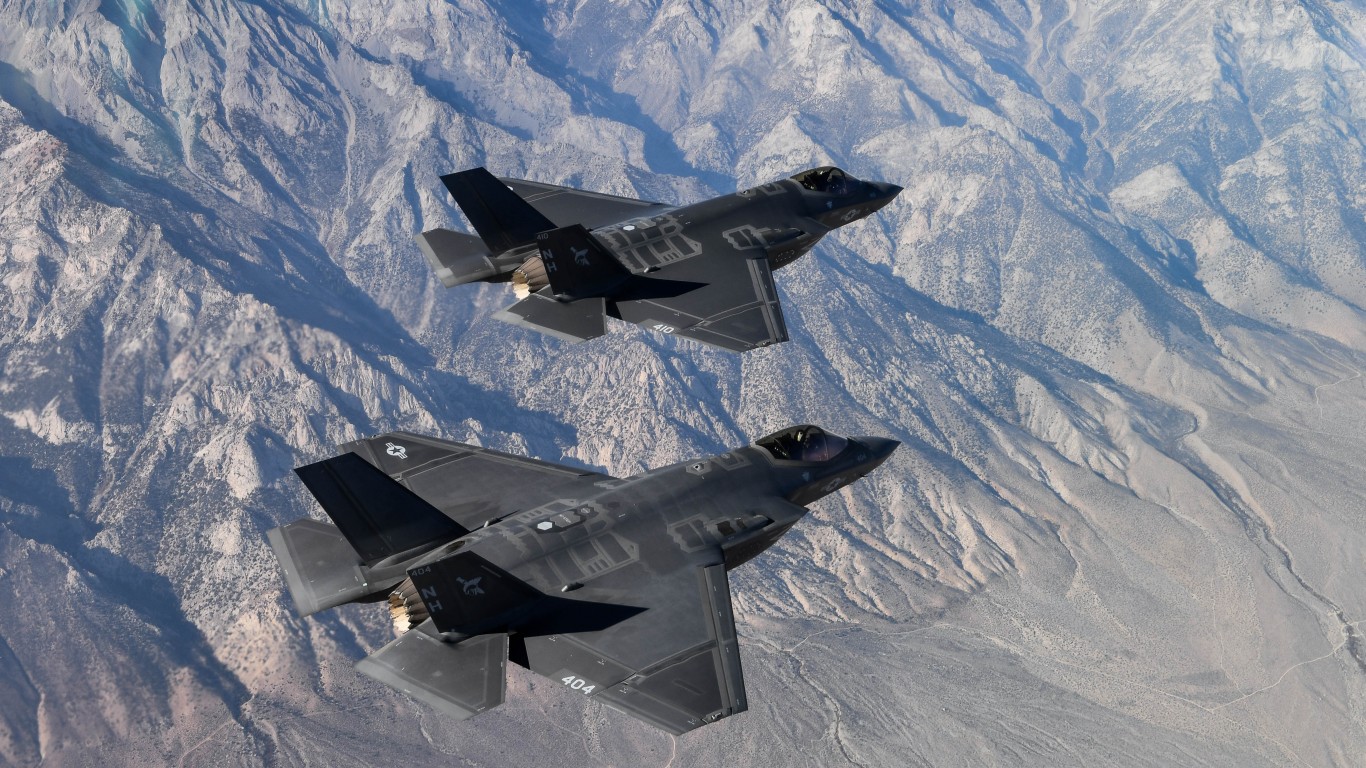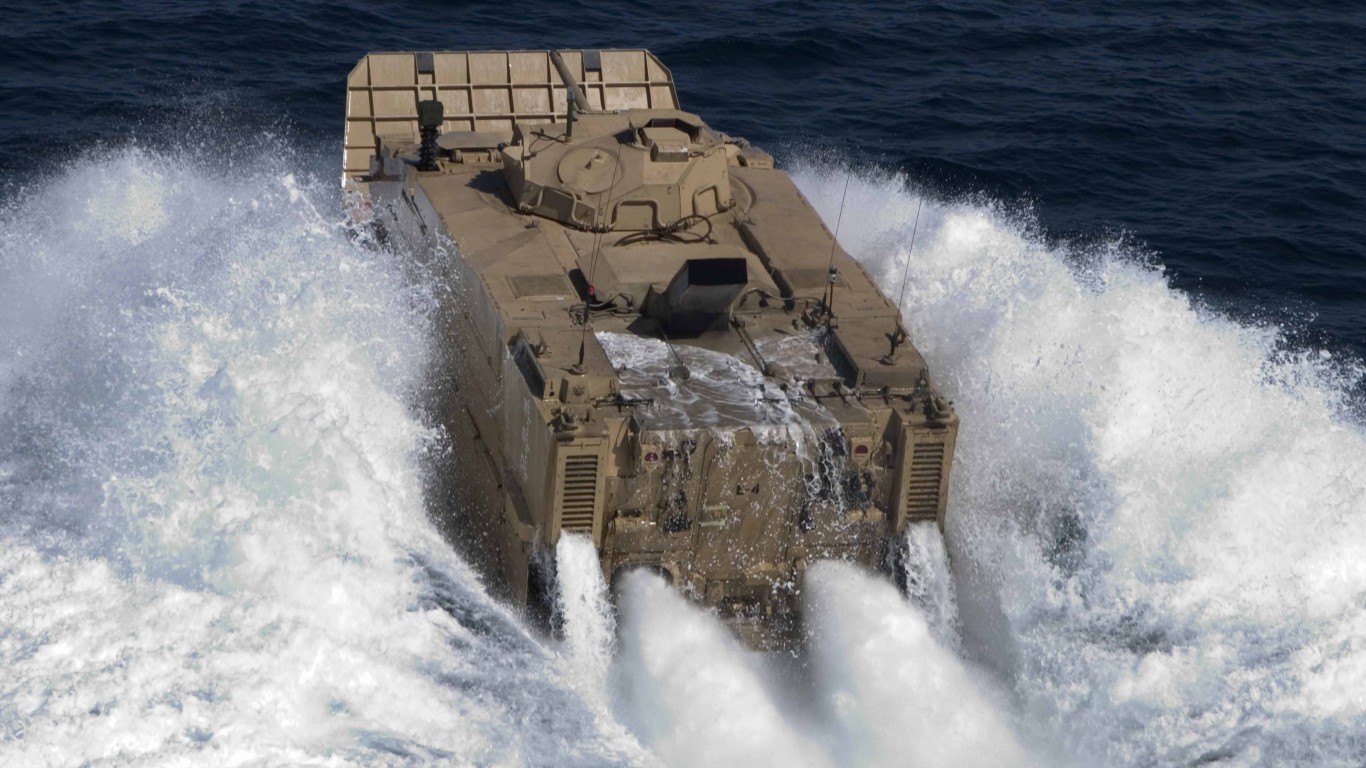
The U.S. military budget is the largest in the world, and by a wide margin. The Biden administration recently submitted a defense budget of $773 billion for fiscal 2023 – which is more than the combined budgets of the next 10 highest-spending countries combined.
While the size of America’s military budget is an enduring subject of political controversy, the latest budget has allocated some funding to initiatives that even some defense industry critics can get behind – such as pay raises for service members, improved housing for military families, and support for Ukraine (Here is a look at how the U.S. is arming Ukraine).
If history offers any lessons, however, it is almost certain that some share of America’s military spending in fiscal 2023 will go to waste and end up as sunk costs – funding for projects that will ultimately go nowhere.
24/7 Wall St. reviewed some of the weapons programs in recent decades that have wasted the most taxpayer money. Programs are ranked on rough estimates of government expenditures, not adjusted for inflation.
Among the weapons programs on this list, estimates of wasted spending range from hundreds of millions to tens of billions of dollars. In most cases, the wasted money resulted from research and development projects that did not achieve their desired results. Notably, the fiscal 2023 military budget includes $130 billion for research and development – the highest amount ever allocated to R&D in a single year.
While there will always be some risk of waste associated with R&D, in many of the programs on this list, the wasted spending was often avoidable, resulting from any number of problems, including unrealistic goals, corporate influence in Washington, short-sighted strategic thinking, and evolving geo-political goals. Ironically, several of these projects were initially pursued as a way of saving taxpayer money in the long term. Here is a look at the companies profiting the most from war.
It is important to note that while each of these weapons projects did not turn out as planned, not all of them were for nothing. In several cases, lessons and technological developments that emerged from them proved useful in other applications.
Click here to see failed weapons the US wasted the most money on
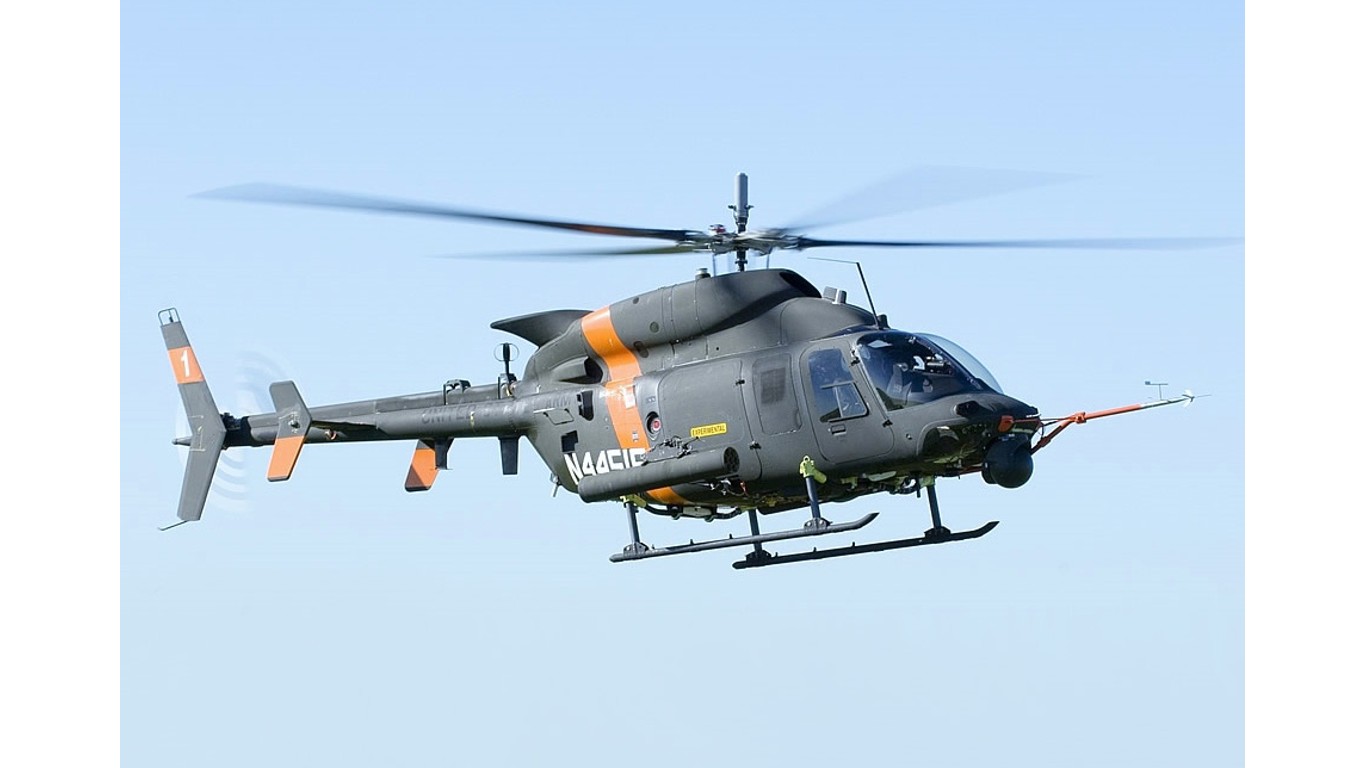
18. ARH-70A Arapaho
> Est. cost: $500 million
The 70A Arapaho armed reconnaissance helicopter was to be the replacement for the U.S. Army’s aging Bell OH-58D Kiowa Warrior, a special purpose helicopter that had been in operation since the 1980s. The Army contracted Bell Helicopters to build the new choppers in 2005, with an order for 368 units to the tune of $2.2 billion.
However, concerns over limited progress and rising expenses – as per-unit cost estimates nearly doubled from the original estimates – caused the Army to ultimately terminate the program in 2008 with only four prototypes to show for the project and an estimated half a billion dollars spent.
[in-text-ad]
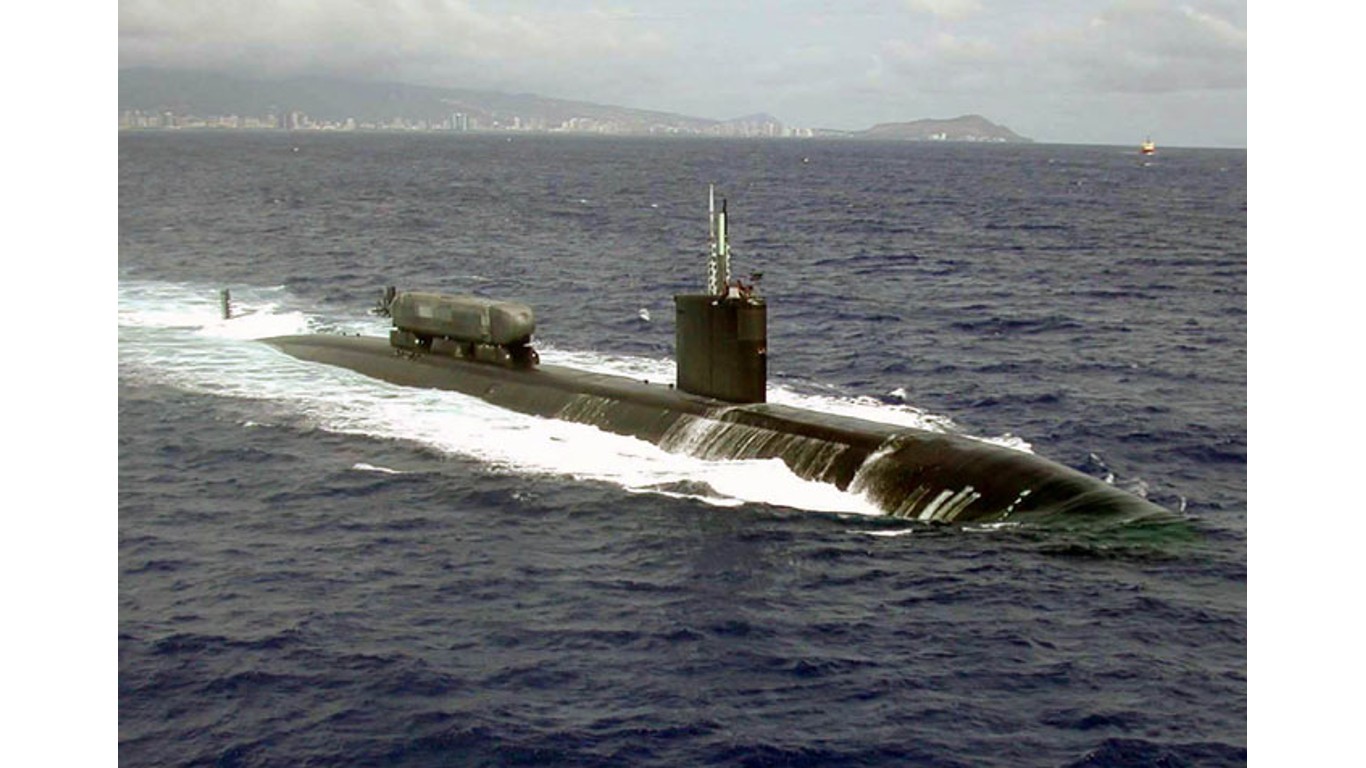
17. Advanced SEAL Delivery System (ASDS)
> Est. cost: $885 million
The Advanced SEAL Delivery System, or ASDS, was a mini-submarine specially designed by Northrop Grumman to transport Navy SEALs into combat areas. Though ASDS Boat 1 successfully completed key operational tests in Pearl Harbor in 2002, problems arose the following year when a Congressional Budget Office study cited several major problems, including noisy propellers and batteries that depleted faster than anticipated.
The rising costs led to cancellation of orders for additional submarines in 2006, and in 2008, the existing mini-sub was so severely damaged by a fire that it was deemed too expensive to repair.
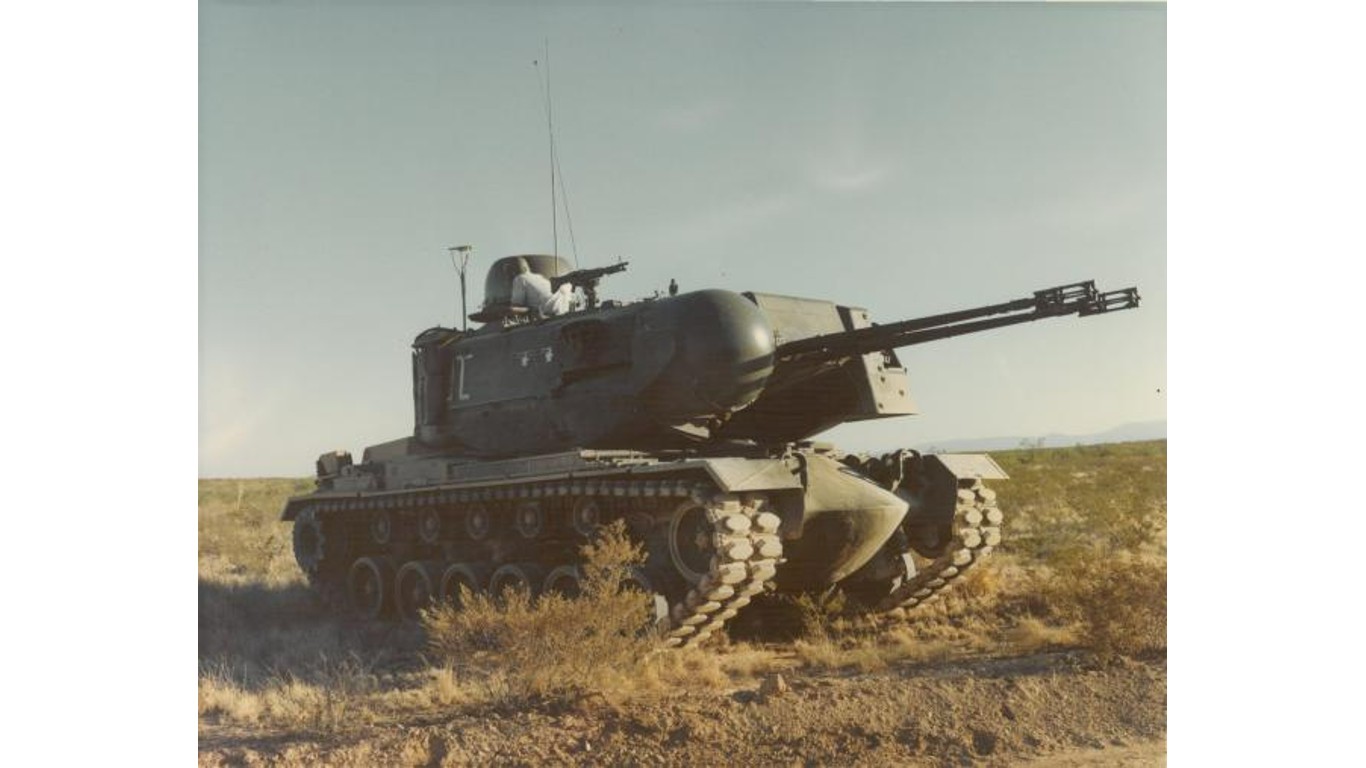
16. M247 Sergeant York
> Est. cost: $1.8 billion
In the late 1970s, the U.S. Army was in need of a drivable anti-aircraft system capable of traveling with tanks to protect them from attack helicopters. Two companies, defense contractor General Dynamics and automaker Ford, were awarded contracts to produce prototypes, and although by many accounts the General Dynamics submission was superior, Ford was ultimately awarded the development contract for between 276 and 618 vehicles.
There were many problems with Ford’s M247 Sergeant York, including slow target engagement times, failures in distinguishing between helicopters and trees, ineffective counter-counter measures, and a top speed that could not match that of the tanks it was designed to protect. After only 50 vehicles had been built, the project was canceled in 1985.
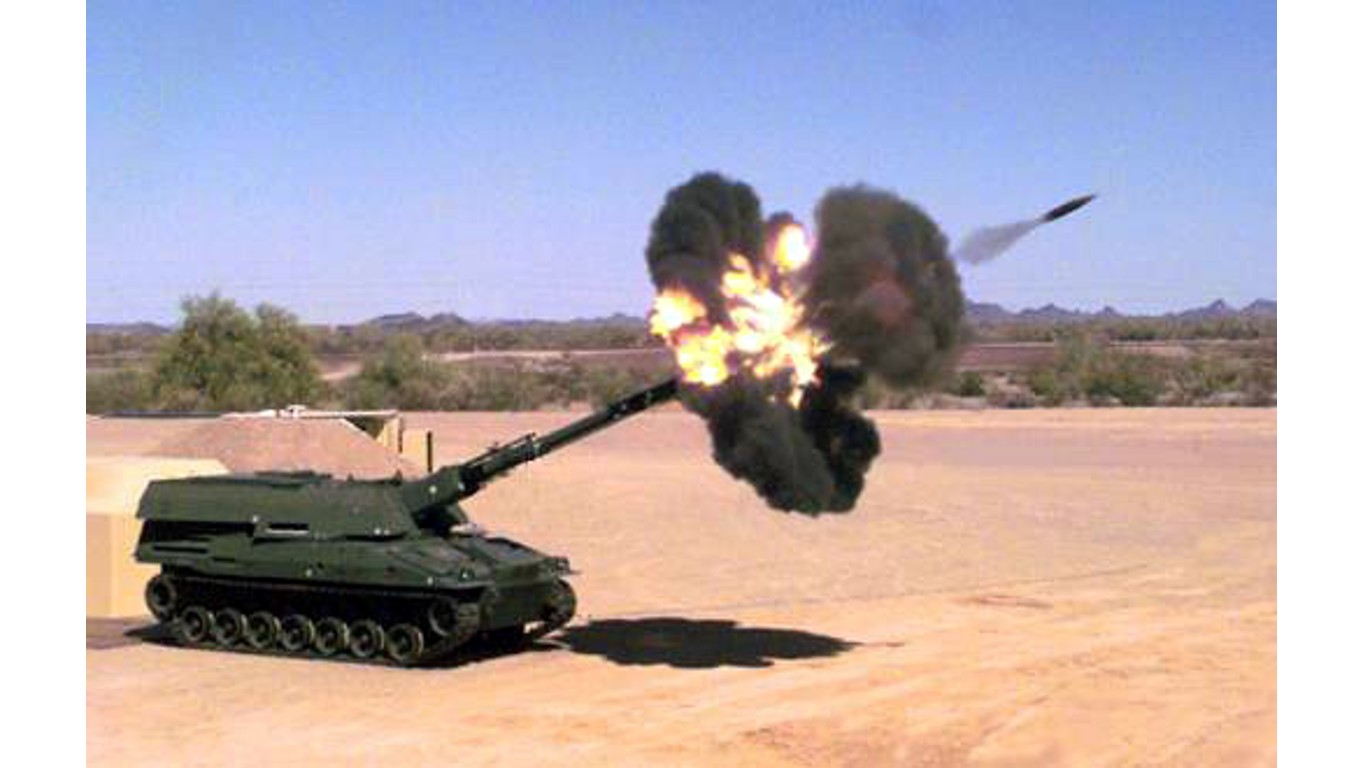
15. XM2001 Crusader
> Est. cost: $2.2 billion
The XM2001 Crusader artillery system was intended to replace the M109 Paladin self-propelled howitzers that had been in use since the 1960s. The Crusader project was taken on by United Defense and General Dynamics in 1995, with plans to enter the system into service in 2008. The Crusader was well equipped with an automatic reloading 155 mm howitzer cannon capable of firing 10 rounds a minute as well as a 1,500 horsepower engine.
The project was ultimately canceled by the George W. Bush administration in 2002 due to the vehicle’s excessive weight, which gave way to mobility issues, as well as other shortcomings with the artillery system. Still, the venture was not a complete waste, as technologies that evolved from its development are used in other artillery systems today.
[in-text-ad-2]
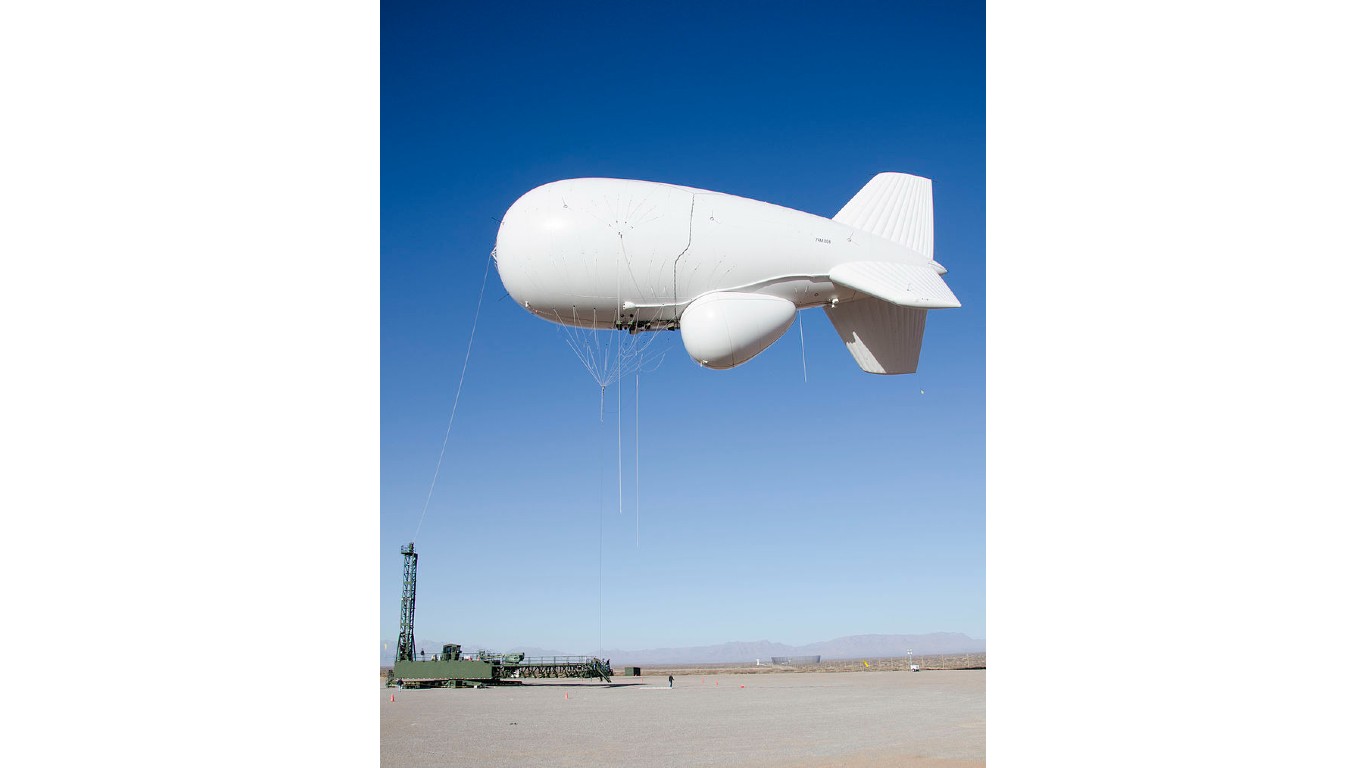
14. JLENS Balloon
> Est. cost: $2.7 billion
The Joint Land Attack Cruise Missile Defense Elevated Netted Sensor System, or JLENS, was effectively a radar blimp that was being designed to provide early warnings for any number of threats, including missiles, drones, and surface vehicles. Ultimately, however, it proved to be ineffective and expensive.
Problems with the system included its ability to distinguish between friendly and adversarial aircraft, communication software glitches, susceptibility to bad weather or enemy fire, and overall low reliability. Though there were several attempts to terminate the program, defense contractor Raytheon, which was awarded the project in 1998, lobbied successfully to keep it afloat until it was finally discontinued in 2017 – nearly 20 years and over $2.7 billion later.
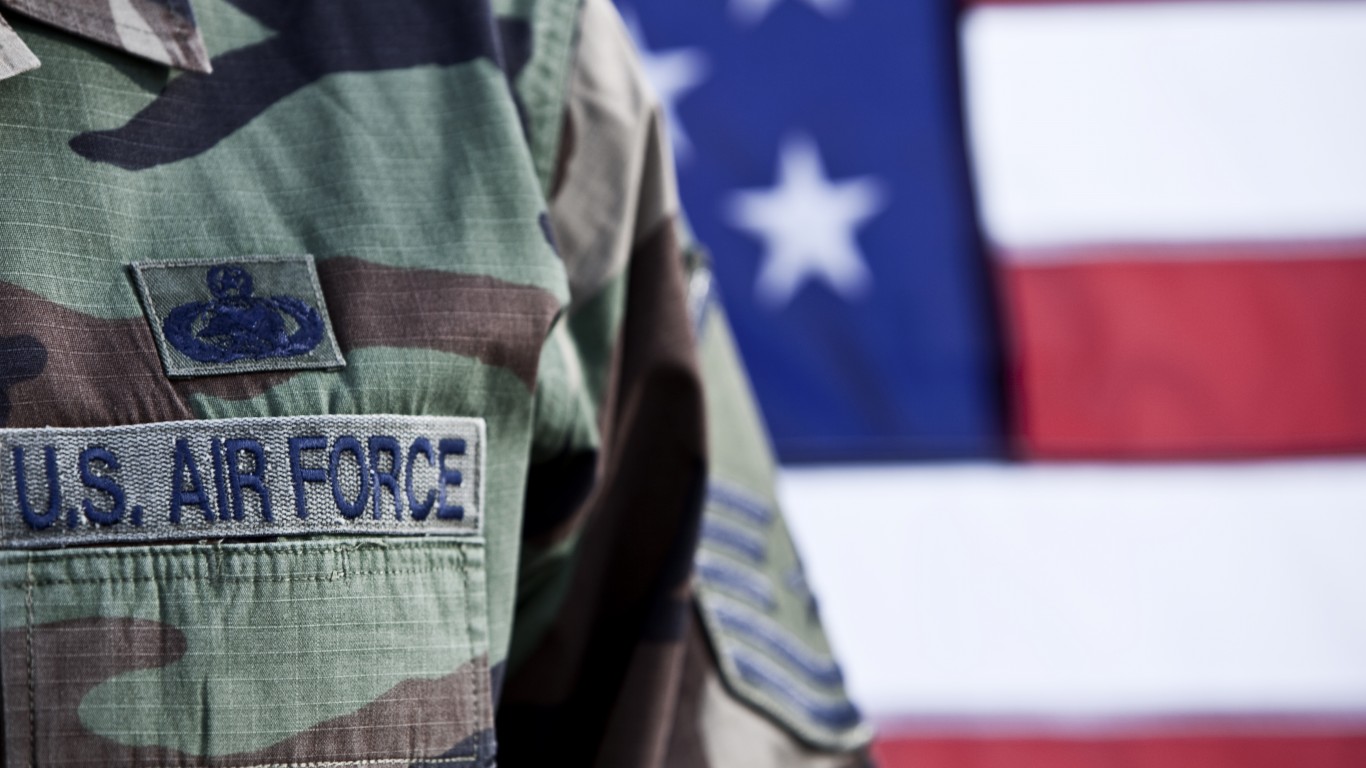
13. Transformational SATCOM (TSAT)
> Est. cost: $3.2 billion
Transformational Satellite Communications System, or TSAT, was an Air Force program that was envisioned as a secure, integrated communications network for the DOD, NASA, and the intelligence community. The program was canceled in 2009, however, as the Obama administration sought to reduce defense spending.
Though $3 billion had been invested in TSAT at the time of its cancellation, not all of it was fully lost, as many innovations that came out of the project proved useful and relevant for different applications.
[in-text-ad]
12. Expeditionary Fighting Vehicle (EFV)
> Est. cost: $3.3 billion
In the 1980s, the Marine Corps was seeking a replacement for its aging Assault Amphibious Vehicle, which had multiple weaknesses, including in its range and top speed. An ideal replacement would have a top speed of 25 knots on water and 45 mph on land, have a range of 500 kilometers, enough space for 17 fully armed troops – in addition to three crew members – and a 35mm gun with a stabilized turret. Defense contractor General Dynamics took on the project of meeting those specifications in what would be known as the Expeditionary Fighting Vehicle.
The vehicle was projected to achieve full operational capability by 2025. However, in 2011, the Marine Corps terminated the program, citing ballooning costs. The vehicles were also not ideal for use in post-9/11 combat missions, which were defined in part by IEDs and necessitated heavier armor that all but negated the vehicle’s advantages in water.
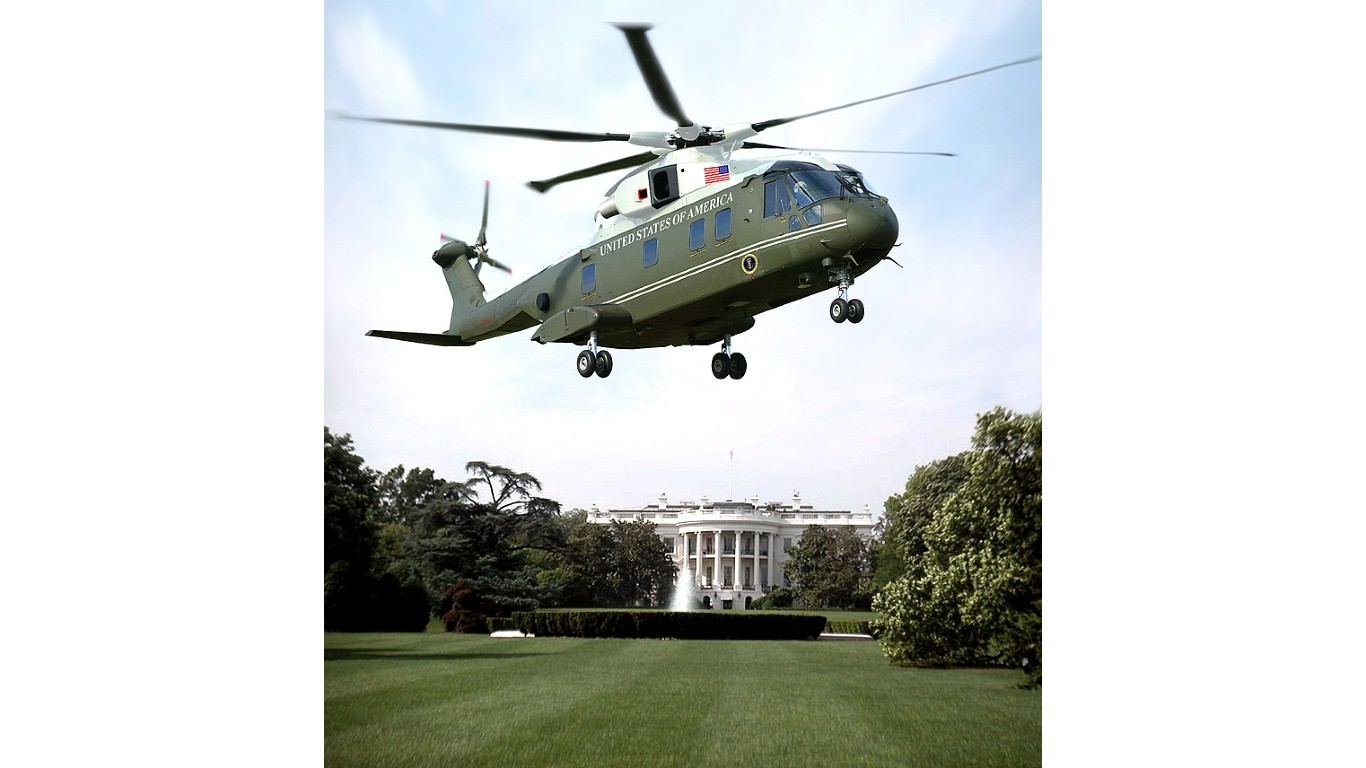
11. VH-71 Presidential Helicopter
> Est. cost: $3.0 billion
The 11 helicopters that comprise the fleet known as Marine One – those that shuttle the president of the United States – are well past their prime. Most are derivatives of the Sikorsky SH-3 Sea King, which has been in service since 1961. The Pentagon issued a request for proposal, or RFP, in 2003 in search of a replacement, and in 2005 awarded the bid to Italian contractor AgustaWestland.
Only two years into development, costs were ballooning, and by 2008, initial estimates had nearly tripled. When the price hit $13 billion in February 2009, the program was canceled by the Obama administration. In total, the federal government spent an estimated $3 billion on research and development for the VH-71 Presidential Helicopter.

10. Universal Camouflage Pattern
> Est. cost: $5.0 billion
The U.S. Army historically relied on two camouflage patterns for its uniforms: one for the desert and one for woodland environments – until 2004. That year, the Army switched to a single new uniform that bore a so-called Universal Camouflage Pattern, or UCP. The pattern quickly proved inadequate for use in Afghanistan and not optimal in nearly any other environment either. The $5 billion development of UCP was criticized further as many argued the money would have been better spent on vehicle and body armor.
Deemed a failure, UCP has now been replaced by a pattern known as Operational Camouflage Pattern, or OCP.
[in-text-ad-2]
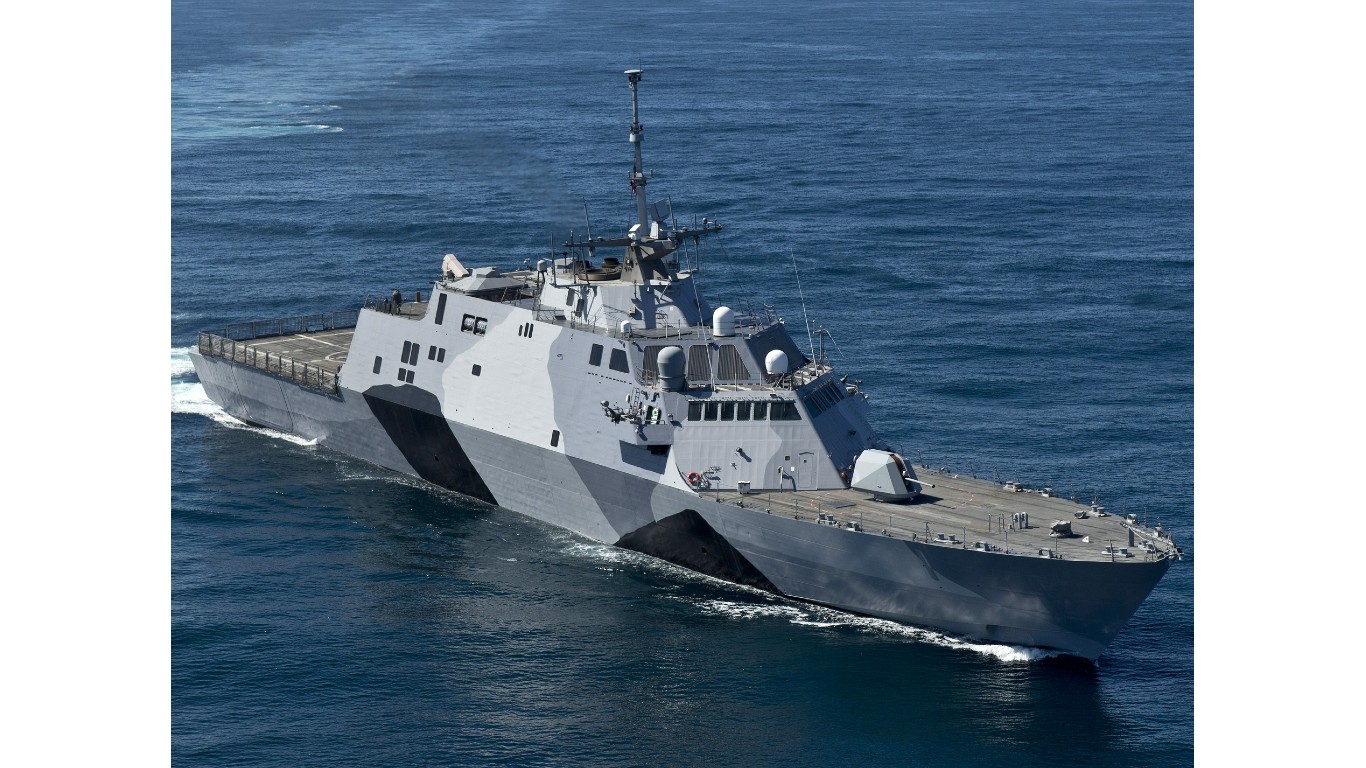
9. Freedom-class Littoral Combat Ships
> Est. cost: $5.0 billion
The U.S. Navy has announced plans to scrap all nine of its Freedom-class Littoral Combat Ships in fiscal 2023. The plan to scrap the ships is as the ships were designed to be at sea for 25 years, yet none of those on the chopping block are close to hitting that milestone, including five that are less than a half decade old.
Though the ships have advanced technology, they have limited practical application and a problem-prone propulsion system. A failed anti-submarine mission package was also a factor. While the ships, manufactured by Lockheed Martin, cost $5 billion to build and outfit, their decommissioning will save a projected $4.3 billion in projected maintenance and upgrades.

8. NPOESS
> Est. cost: $5.8 billion
The NPOESS, or National Polar-orbiting Operational Environmental Satellite System, was a failed attempt at a civil-military weather satellite program. NPOESS’s functionality would include ozone mapping and infrared imaging. The program began during the Clinton administration as a way of combining the needs of the National Oceanic and Atmospheric Administration and the Air Force and ultimately be a cost savings. Overrunning its initial budget by billions of dollars, the program proved to be anything but.
Development of NPOESS was contracted to Northrop Gruman and after a series of delays and an estimated $5.8 billion spent, the Obama administration scrapped the project in early 2010, favoring two separate polar orbiting systems, one civil and one military.
[in-text-ad]
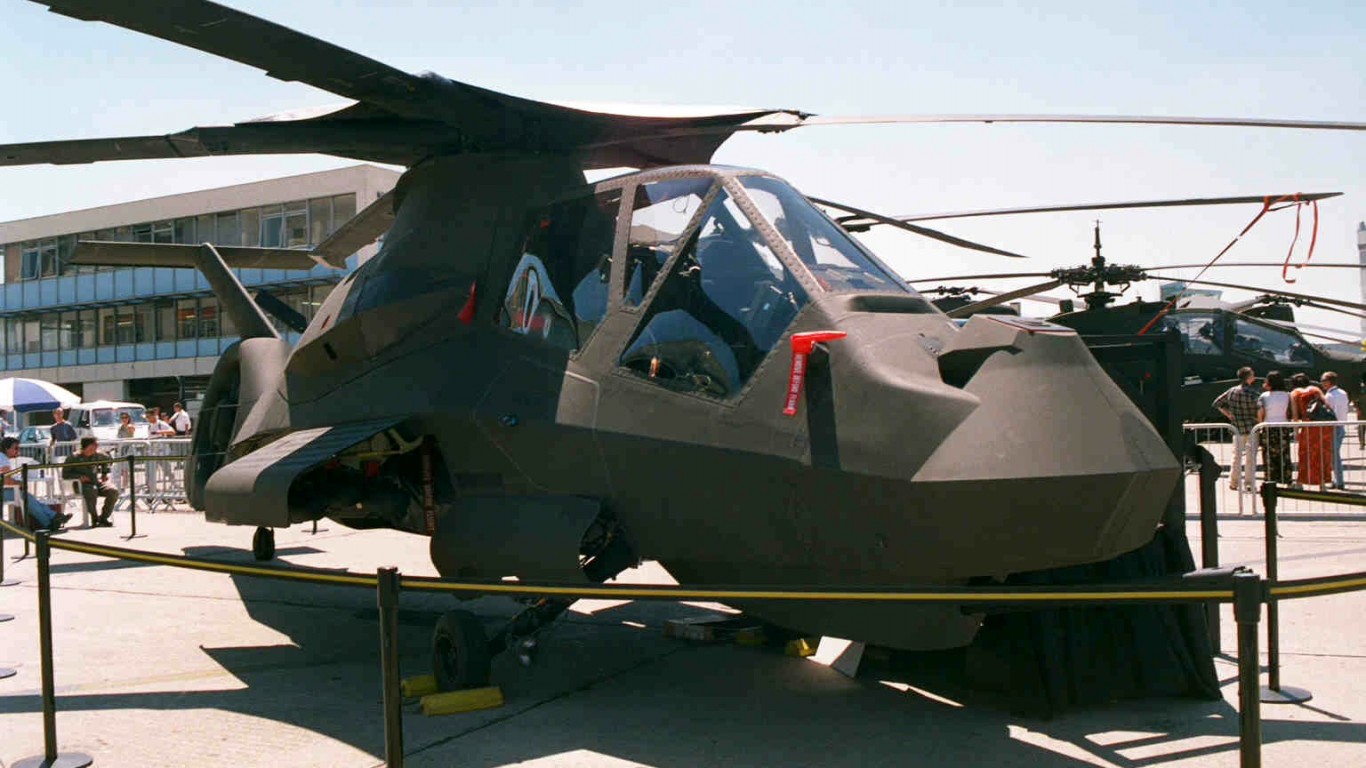
7. Boeing-Sikorsky RAH-66 Comanche
> Est. cost: $6.9 billion
Following six years of planning at the height of the Cold War, the Army issued an RFP for an all new, state-of-the-art helicopter in 1988. This new helicopter was to perform a multitude of functions, including attack, reconnaissance, and surveillance. It would also have stealth capabilities and be able to fly across an ocean. Ultimately, Boeing and Sikorsky were awarded the contract, and work began in 1991.
The Army ultimately wanted a fleet of 1,200 of these Comanche helicopters with delivery to begin in 1996 – a date that was pushed to 1997 and then 2002. The litany of problems included those associated with radar signatures, antenna performance, gun system function, target detection, software, and questions around whether the 10,000 pound helicopter could even get off the ground. When the project was scrapped in 2004 in favor of UAVs, or drones, it spanned 22 years and cost nearly $7 billion.

6. Future Combat Systems
> Est. cost: $18.1 billion
Future Combat Systems, or FCS, was an ill-informed concept involving an integrated set of both manned and unmanned vehicles that, at the time development began in 1999, was meant to be the cutting edge of battlefield technology for the 21st century. Ultimately, however, it culminated into little more than an $18 billion waste.
Poorly conceived initially, the project changed course following the terror attacks of Sept. 11, 2001, to better align with new military priorities. However, continued technical problems and rapidly rising costs, coinciding with expenditures during the Iraq War, proved insurmountable. By the time the project was canceled in 2009, eight prototype vehicles were all the FCS had yielded.
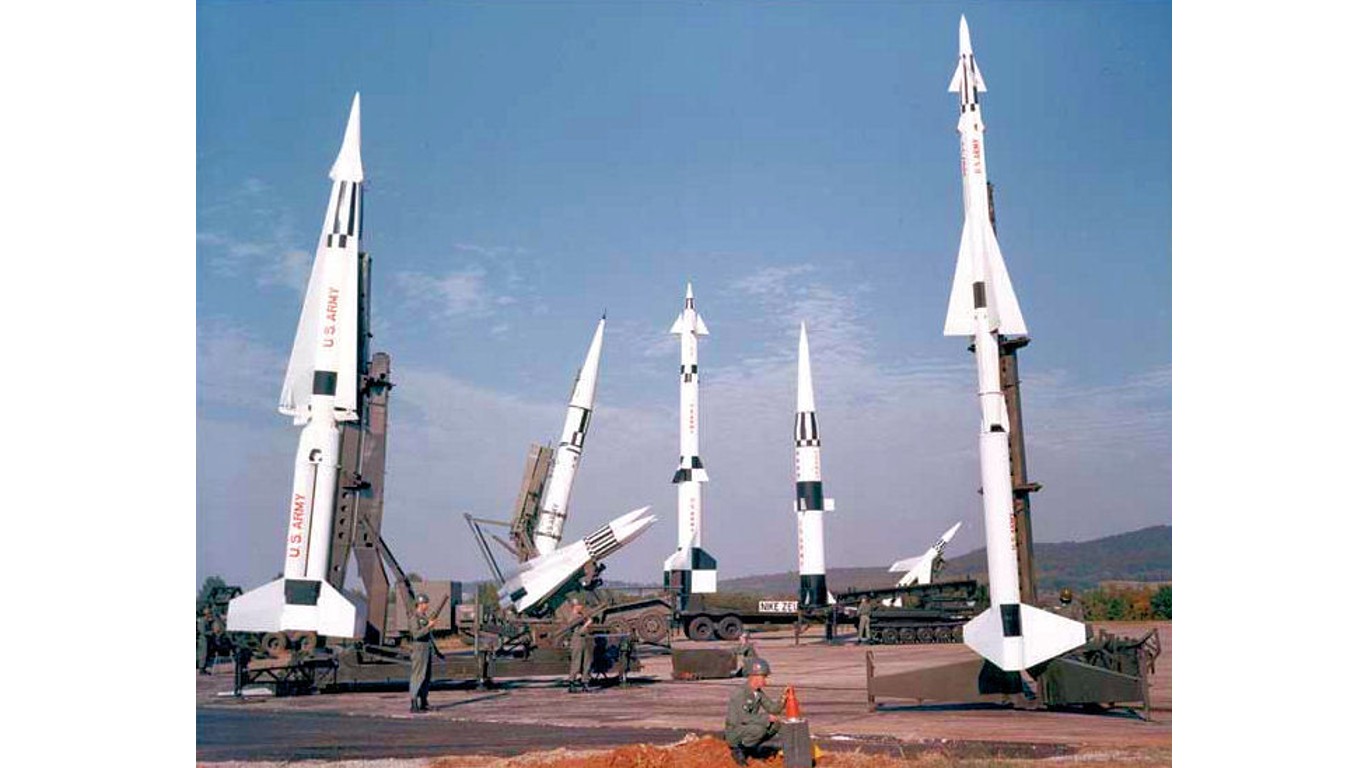
5. Project Nike
> Est. cost: $20.0 billion
In hindsight, much of the Cold War arms race between the United States and the Soviet Union was a waste of taxpayer money, to say nothing of the inherent risk of nuclear weapon proliferation. One example of potentially wasteful spending in the U.S. during the Cold War was Project Nike – an initiative to build batteries of two or three anti-aircraft missiles around key cities and military sites across the country.
There were over 200 Nike surface-to-air missile sites across the country in 1963 ready to eliminate any threat a Soviet bomber might pose. However, by the 1970s and the widespread adoption of intercontinental ballistic missiles, the Nike sites were effectively rendered obsolete, having never once been used. In the brief period that the Nike program theoretically acted as a defense system against a Soviet attack, the Pentagon spent an estimated $20 billion or more on the project. What’s more, six soldiers and four civilians were killed when an Ajax missile exploded at a New Jersey Nike site in 1958. Today, Nike sites are either abandoned or have been repurposed.
[in-text-ad-2]
4. Zumwalt destroyer
> Est. cost: $23.5 billion
The Zumwalt DDG-1000 class destroyer is one of several examples on this list of a conceptual vision that lay beyond the reach of what was practical or achievable. The destroyer was intended to be a land attack vessel with a minimal radar presence and highly advanced weapons, requiring a small crew thanks to automation. However, its weapons systems have proved to be less effective than anticipated, while its radar presence was greater than the less expensive Ohio-class cruise missile submarine. Additionally, the destroyer required over 50% more crew than initially promised. Even the ship’s advanced hybrid propulsion system has presented challenges, as the first DDG-1000 broke down in the Panama Canal in 2016.
The Navy initially sought to commission 32 DDG-1000s to replace the Arleigh Burke-class destroyer. Now, production will end after just three ships – each of which cost $4.5 billion, on top of the $10 billion in initial development.
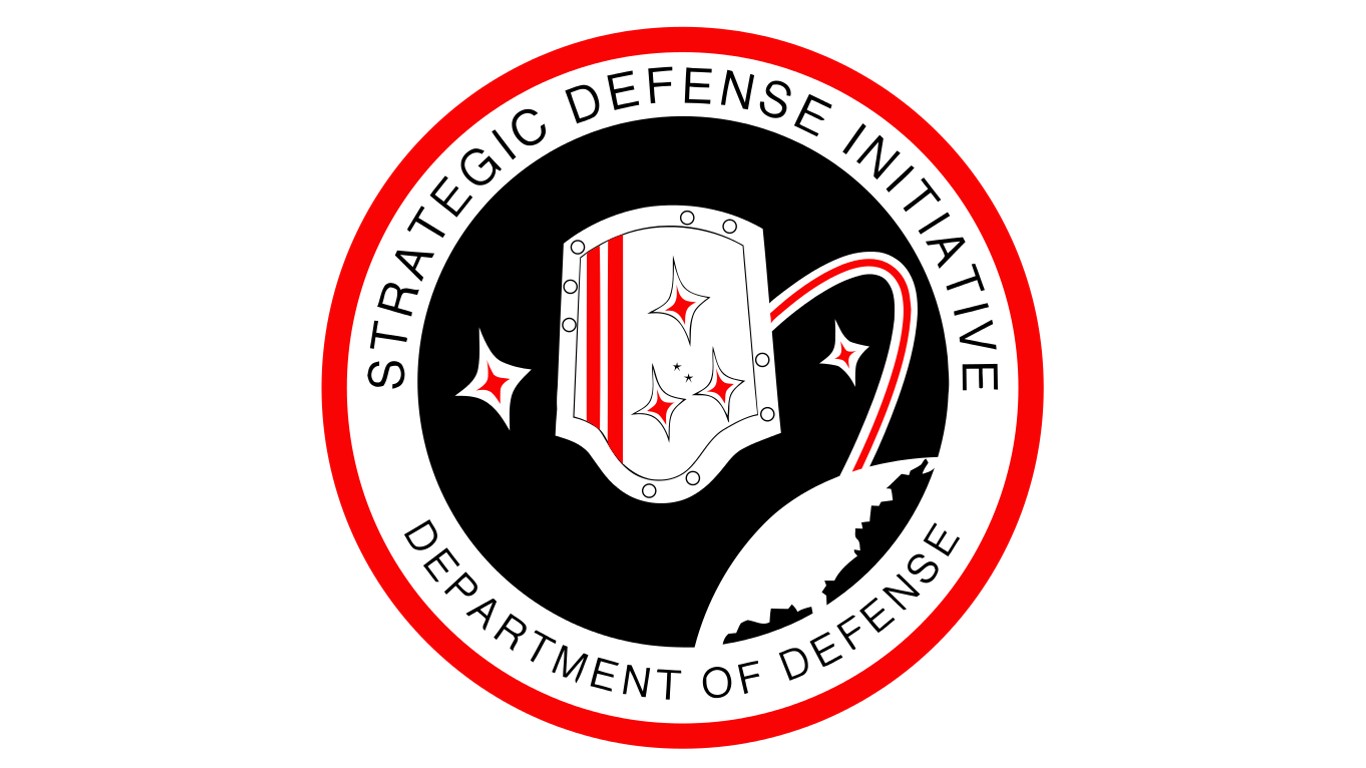
3. Strategic Defense Initiative
> Est. cost: $30.0 billion
One of the most controversial – and expensive – investments made in the interest of national security was the Strategic Defense Initiative, or SDI. Announced by President Ronald Reagan in 1983, SDI was to be a network of lasers in outer space that would protect the United States from any attack from a Soviet-launched nuclear ICBM.
Derisively known as Star Wars, the program was ridiculed for the litany of technical hurdles, many of which were thought to be insurmountable by experts. The program was never fully realized, and by the time it was sidelined by President Bill Clinton in 1993, the government had poured an estimated $30 billion into it.
[in-text-ad]
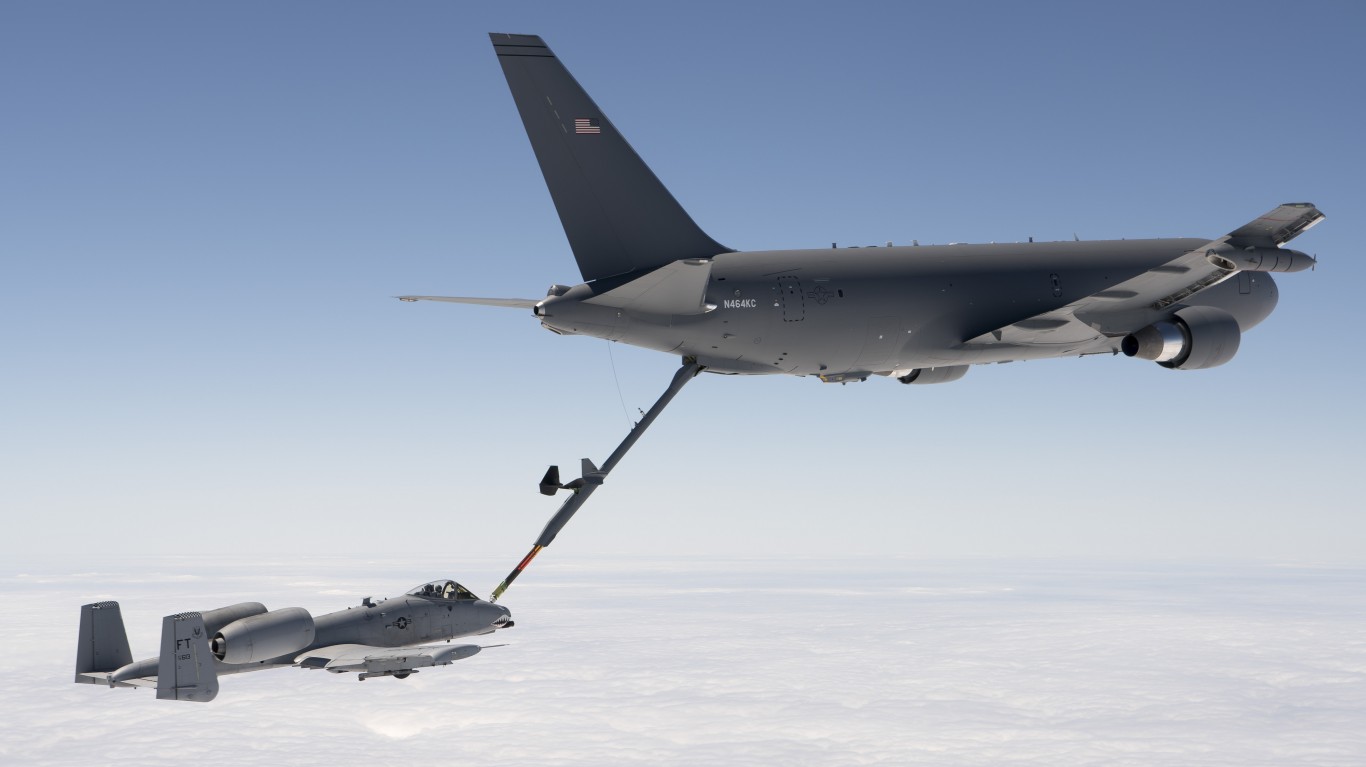
2. KC-46 Refueling Tanker
> Est. cost: $4.6 billion
The KC-46 Refueling Tanker is a fixed wing aircraft manufactured by Boeing. It is one of several aircraft on this list to have seen its full deployment delayed by technical problems. The aircraft has several deficiencies classified as category 1, a Pentagon term reserved for the most serious technical problems.
At least two of the issues are with the plane’s remote vision system, which does not function properly in all conditions and is essential for mid-air refueling. Boeing has agreed to redesign the system at no charge to the U.S. taxpayer. The Air Force, meanwhile, is using federal money to fix the aircraft’s service actuator, which does not meet specifications to refuel certain key aircraft. Currently, the aircraft will not be deployed in combat for anything short of an emergency, and full rate production is delayed until at least 2024. Cost overruns have already nearly matched the initial contract amount of $4.9 billion.
1. F-35
> Est. cost: $1.7 trillion
The F-35 is a multirole combat aircraft manufactured primarily by Lockheed Martin. A fifth-generation fighter, the F-35 is the result of a program launched in 2001, and is intended to be a single-unit replacement for a wide range of aging inventory, including F-18s, F-16s, Harriers, and F-22s – and ultimately a cost savings for the Pentagon. However, the do-it-all aircraft may have proven to be a bit of a reach conceptually, and the program’s lifetime cost, from research and development to operation and fleet maintenance is projected to hit $1.7 trillion.
The program to develop the F-35 has been plagued with problems from the start. Problems include part failures, software glitches, damage to the aircraft when firing the main gun, and at least one incident of a jet catching fire on the runway before take off. Though the jet has some impressive capabilities, and over 800 have been delivered to customers world wide, its usage will likely be far more limited than initially anticipated.
Take Charge of Your Retirement: Find the Right Financial Advisor For You in Minutes (Sponsor)
Retirement planning doesn’t have to feel overwhelming. The key is finding professional guidance—and we’ve made it easier than ever for you to connect with the right financial advisor for your unique needs.
Here’s how it works:
1️ Answer a Few Simple Questions
Tell us a bit about your goals and preferences—it only takes a few minutes!
2️ Get Your Top Advisor Matches
This tool matches you with qualified advisors who specialize in helping people like you achieve financial success.
3️ Choose Your Best Fit
Review their profiles, schedule an introductory meeting, and select the advisor who feels right for you.
Why wait? Start building the retirement you’ve always dreamed of. Click here to get started today!
Thank you for reading! Have some feedback for us?
Contact the 24/7 Wall St. editorial team.
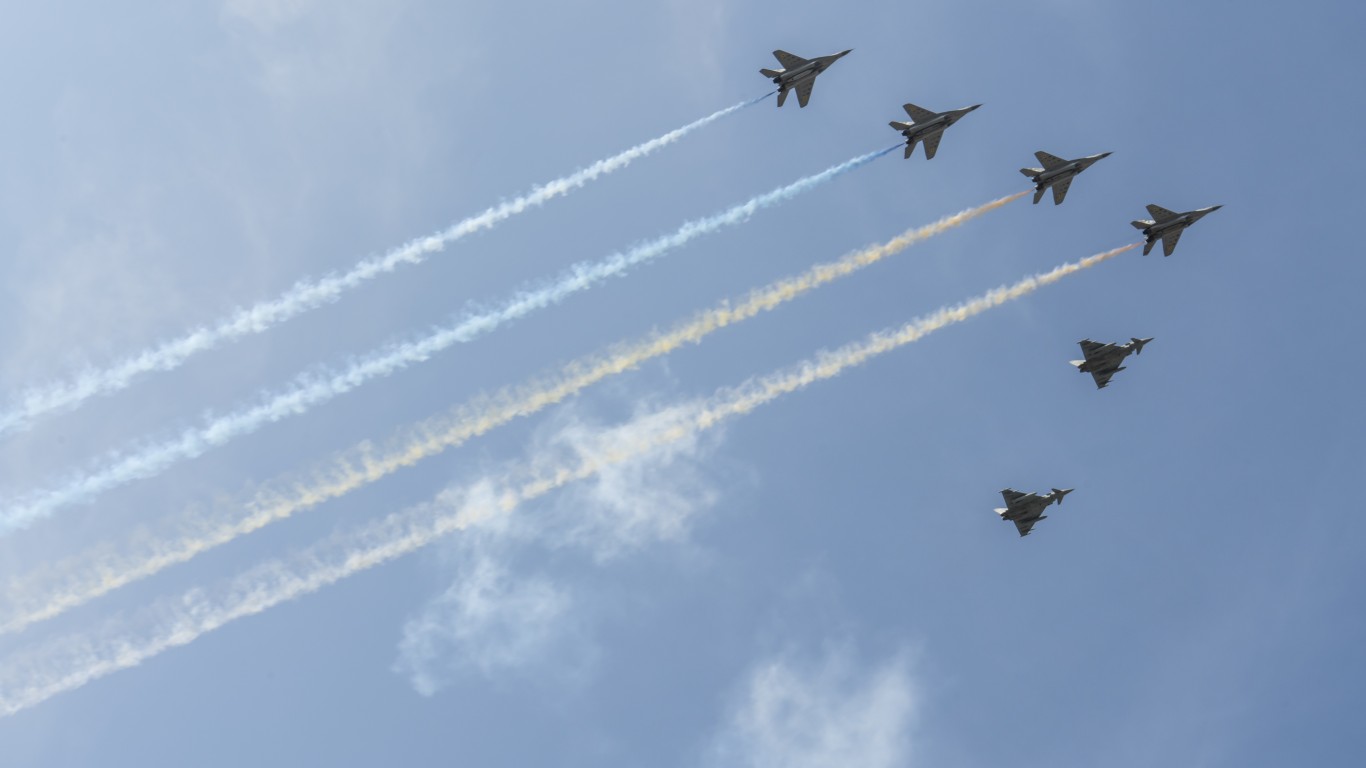 24/7 Wall St.
24/7 Wall St. 24/7 Wall St.
24/7 Wall St.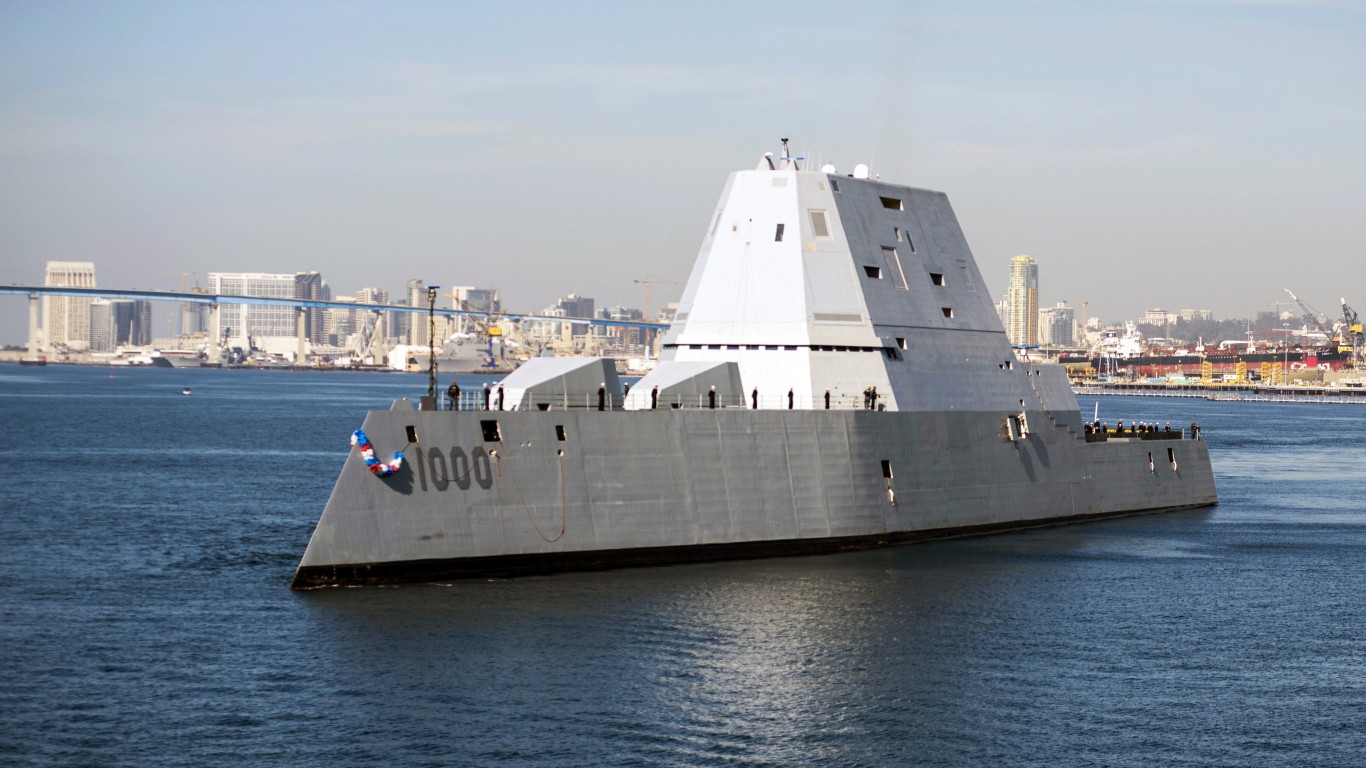
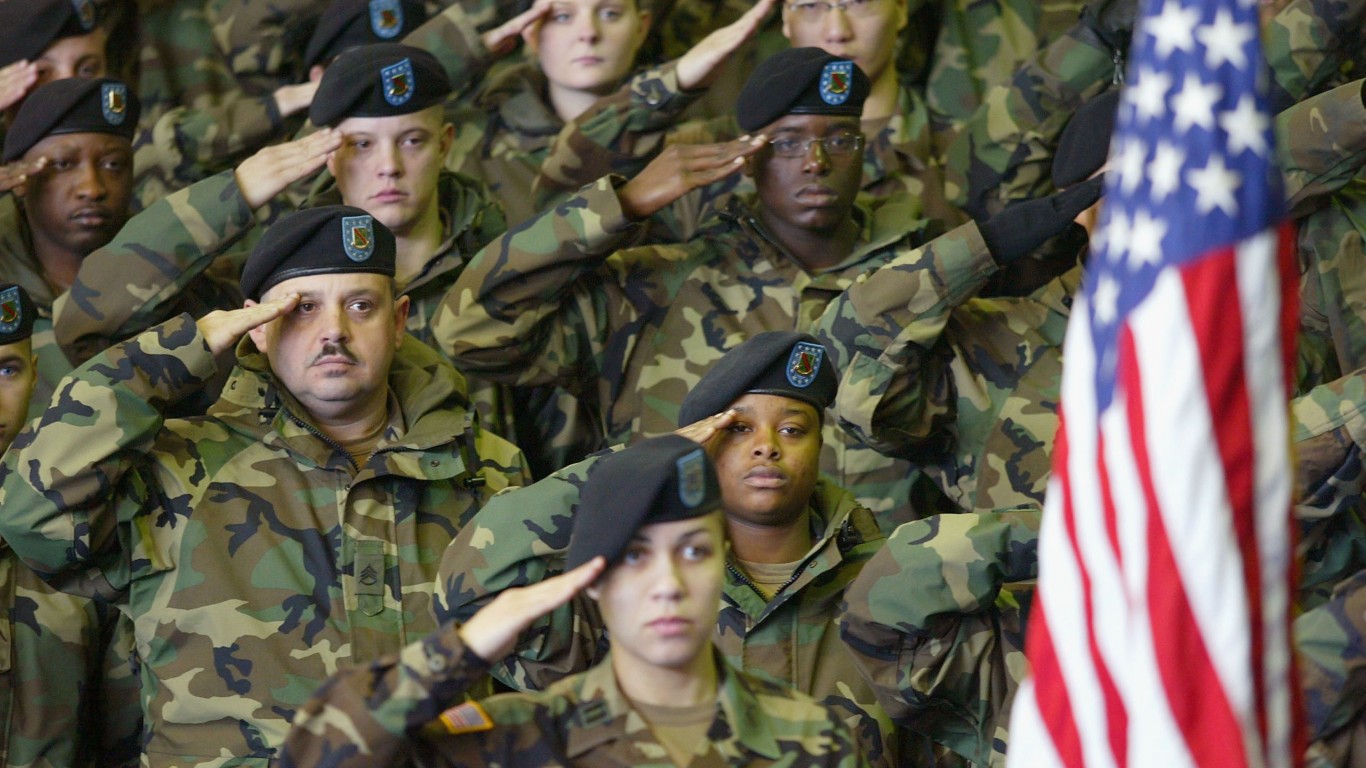 24/7 Wall St.
24/7 Wall St.